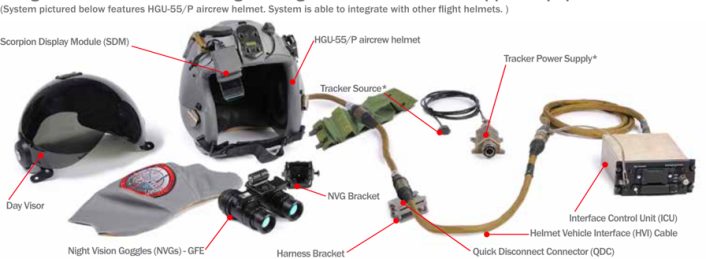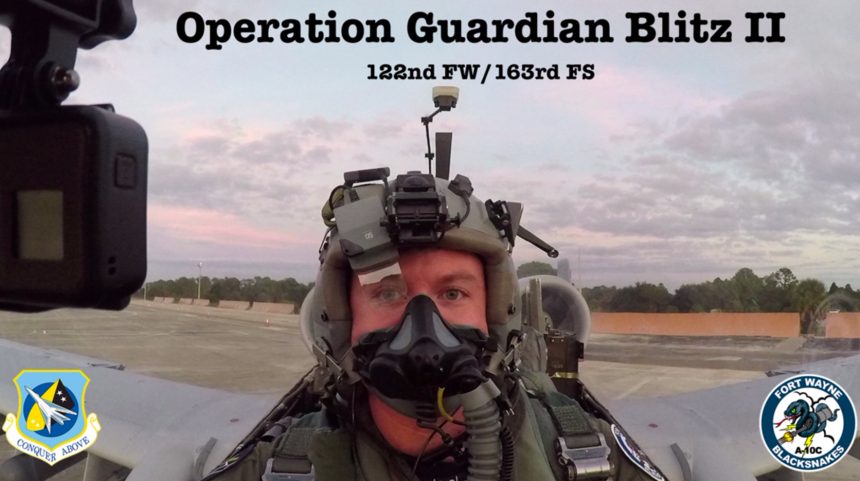Cockpit Video Brings You Aboard An A-10 Thunderbolt II during Operation Guardian Blitz II
A-10C Thunderbolt II aircraft, belonging to the 163rd Fighter Squadron of the 122nd Fighter Wing from Fort Wayne, Indiana, have deployed to MacDill Air Force Base, Florida, on Dec. 3, 2018, to take part in Operation Guardian Blitz.
Operation Guardian Blitz provides Warthog pilots with an opportunity to train in Basic Surface Attack (BSA), Close Air Support (CAS) and night flying operations while utilizing NVGs (night vision goggles), as well as perfom fire the iconic GAU-8/A Avenger Gatling Gun at Avon Park Air Force Range (APAFR), a 106,000 acre bombing range located in central Florida.
This is the second time the A-10s from Fort Wayne deploy to Florida for Guardina Blitz this year: the first one was at the end of January.
The video below shows the “Blacksnakes” at work during the drills. Along with the dual GoPro set up (that allows video recording in both directions), the clip shows the A-10’s Gentex/Raytheon Scorpion helmet-mounted cueing system.
Developed by GentexVisionix, the Scorpion is a monocle-based system that can be applied to a variety of helmet shells, that requires just a single, small interface control unit and one magnetic sensor mounted in the cockpit. It provides full-color, dynamic flight and mission data, projected directly and safely into the aircrew’s line of sight via a large field-of-view, fully transparent, rugged, optical waveguide assembly. This capability allows the user to remain head-up and eyes-out of the cockpit with greatly enhanced real-time Situational Awareness (SA).

The Scorpion (full color Helmet Mounted Cueing System with a Field Of View 26° x 20°), is fully integrated with the aircraft’s avionics, does not require avionics bay integration, and has the ability to provide GPS coordinates of designated points for targeting or handing off to other platforms.
Installation is simple. The Scorpion system features one component that is able to be easily mounted within the aircraft cockpit – the Interface Control Unit (ICU).
More specifically:
- All system control via the Ethernet Data bus (Alternatively a control panel is available for system control)
- One LRU that can be installed in the side console DZUS rail mount
- Inertial Optical Hybrid tracker requires no mapping
- System Interface either via Ethernet or MIL-STD-1553B
- System to provide data transfer cartridge with size up to 128 GB
The Scorpion is an Open System that allows every pilot to create his own cockpit, choosing from a variety of Scorpion features that allow for the personalization and prioritization of data displayed. According to the vendor’s website:
There is no need for a pilot to continuously scan and interpret all of the “heads down” data amidst the aircraft instrumentation and displays. All necessary data is available to the pilot in a virtual Heads Up Display (HUD) with 360⁰ x 360⁰ conformal color symbology that is overlaid onto the “real world.”
- Symbols are programmed by the integrator and downloaded by the aircraft mission system on startup
- Integrator defines when and where symbols or real-time video are placed.
- Both video and symbols can be scaled. Only one symbol needs to be defined, and then expanded or reduced on-the-fly.
- Placement may be in any of four coordinate systems:
- Earth (Lat, Long, Alt)
- Aircraft (Azimuth, Elevation, Roll)
- Cockpit (X,Y,Z relative to design eye)
- Helmet (Azimuth, Elevation and Roll relative to helmet bore sight)
The Scorpion Display Module (SDM), that is small in size and imposes no significant extra weight burden to the pilot’s head, can be flipped and swung out of the way when it is not required.
The helmet supports full day/night transition missions as shown in the short video, during which you can see the pilot taking off at dusk with no NVGs and then fly part of the sortie with the goggles (the Scorpion is compatible with both the AN/AVS-9 NVGs and Panoramic Night-Vision Goggles – PNVGs). Interestingly, the helmet systems continues to provide HUD-like symbology and video (for instance on-demand sensor IR video) feed during the NVGs attachment/detachment.









